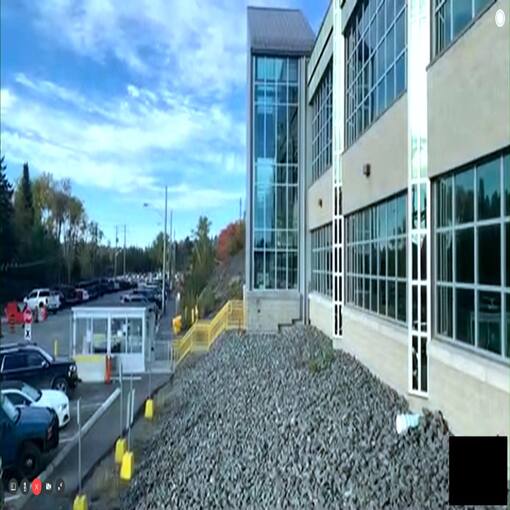Evidence Indicates There’s Another Planet the Size of Mars in Our Solar System
If it's there, the rumored Planet 9 may have company.
Sep 27, 2021

A rogue planet with a flash of an eclipsed star, and a cosmic background.
Our solar system has more surprises in store.
The eight official planets aren't the only ones that survived the formation of our solar system, and the Earth might have another sister planet lurking somewhere in interstellar space, in a "third zone" of the solar system, according to a recent paper published in the journal Annual Review of Astronomy and Astrophysics.
This means that, if Planet 9 is out there, it might have a Mars-sized company.
Computer simulations hint at a Mars-sized twin beyond Neptune
The new study examines data from the mysterious third zone of the solar system, and suggests that, beyond Neptune, there might be something the size of Mars lurking in the darkness. Modern astronomy categorizes all known planets in our solar system into three types. You're on one of the first, since the Earth is one of the four rocky inner planets that orbit the sun within the main asteroid belt that separates Mars and Jupiter. The second group is the outer solar system, and is also the realm of the gas giants Jupiter, Saturn, Uranus, and Neptune. These accumulated unspeakably large quantities of gas and ice around what scientists suspect are rocky cores.
But the third region of our solar system lies beyond what we typically include in casual conversation about the local planets. Out beyond Neptune is the realm of dwarf planets like Pluto, Sedna, Eris, and even tinier bodies, like comets. But this is all wrong, according to the researchers of the recent study. "It seems unlikely that nature created four giant planet cores, but then nothing else larger than dwarf planents in the outer solar system," said Kathryn Volk from the University of Arizona and Brett Gladman, of the University of British Columbia, in the study. To fully grasp how the solar system came into being, scientists employ computer simulations to see if special initial conditions or events might evolve into a solar system like ours.
The hypothetical rogue world isn't Planet 9
Multiple models that most closely approximate our real solar system start with at least one extra planet in a baffling position, according to Volk and Gladman. These models hint that the outer solar system used to house one or more rocky planets, roughly the size of Earth or Mars, in addition to the colossal gas and ice giants we now have. But over time, the interaction of these rocky wanderers with the outsized gravity fields of the gas giants nudged them into a far-out orbit, or even on an exit trajectory, away from the entire neighborhood. "I agree that it is likely that a Mars planet was there initially," said Planetary Scientist David Nesvorny of the Southwest Research Institute, in an Inverse report. "[B]ut the question is whether it has survived and if we have any evidence for it."
"Our simulations found that in about half of the cases" of simulated solar systems like ours, "all of the Mars-scale planets in the outer solar system were ejected into interstellar space," said Astrophysicist Scott Tremaine, of the Institute for Advanced Study, in the Inverse report. "But in the remaining half, one 'rogue' planet was left in an orbit similar to that of the detached population of the Kuiper Belt objects." If this novel rogue planet exists, it won't be Planet 9, which is a much larger body some scientists suspect exists even farther in space beyond Neptune. But while more modeling could help us pin down where the Mars-sized rogue is lurking, ultimately the only proof will be: To find it.
















